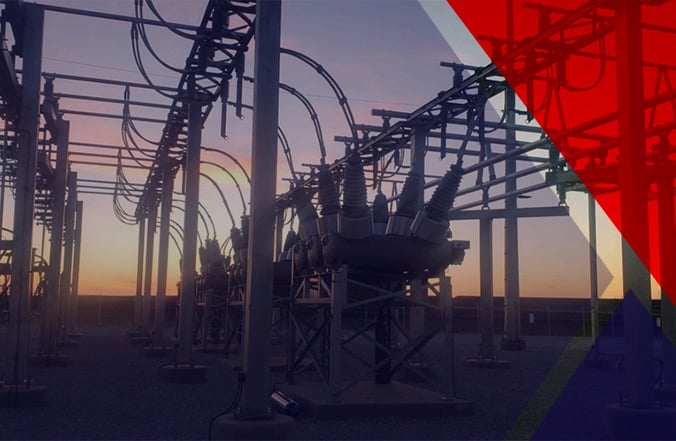As Nor-Cal continues to lead the way in renewable energy integration, guidelines released for inverter-based resources aim to improve grid stability with standardized plant response characteristics. These resources serve to inform and educate owners, operators, and builders on their role in grid stability. Previous guidelines such as NERC’s “Inverter-Based Resource Performance Guidelines” released in 2018, cover a range of areas including high-level plant control response in the case of a frequency or voltage event, as well as inverter specific behavior and protections.
The recently released IEEE Std 2800 “IEEE Standard for Interconnection and Interoperability of Inverter-Based Resources (IBRs) Interconnecting with Associated Transmission Electric Power Systems” expands on previous guidelines and highlights key areas for improvement and standardization. A key point in both the older standards and guidelines and IEEE 2800 is a focus on grid stability and stable responses from plant controllers and plant equipment.
Two sections concerning plant control from previous standards are expanded upon in IEEE 2800, those being Primary Frequency Response (PFR), and Automatic Voltage Regulation (AVR). While the sections themselves provide more detail, the performance targets outlined in previous standards and guidelines are expanded upon in IEEE 2800.
IEEE 2800s performance targets for AVR aim for a reaction time (the time between a measured change and a measured reaction by the control system), response time (the time to reach 90% of the plant’s measured response), and damping ratio (a measurement of a response’s oscillations) as follows:
Reaction Time: Less than 200ms
Max Step Response Time: Between 1-30 seconds
- Typically defined by the transmission system operator
- Capacitor banks/Transformer LTCs should respond within 60 seconds
Damping ratio: Greater than 0.3
IEEE 2800s performance targets for PFR aim for a reaction time (the time between a measured change and a measured reaction by the control system), rise time (the time to move from 10% to 90% of the plant’s measured response), settling time (duration between the response beginning, and settling within the settling band), damping ratio (a measurement of a response’s oscillations), and settling band (percentage band the system response should settle within following its response) as follows:
Reaction Time: Min: 200ms, Default: 500ms, Max: 1 second
Rise Time: Min: 2 seconds, Default: 4 seconds, Max: 20 seconds
Settling Time: Min/Default: 10 seconds, Max: 30 seconds
Damping Ratio: Min: 0.2, Default: 0.3, Max: 1.0
Settling Band: Min: 1%, Default: 2.5% (of change), Max: 5%
One critical component of IEEE 2800’s performance targets is the reaction time. Depending on the transmission system’s operator, your reaction time performance target for AVR and PFR could be as low as 200ms across the board. This reaction time target presents a few problems for a typical solar power plant. A plant’s “reaction time” requires a few steps that must take place in short order. Consider a small voltage event as an example:
- Voltage change must be measured at the point of measurement
- Voltage measurement must be communicated from the measurement device to the plant controller
- Plant controller PID must recognize the change and begin applying a reactive power setpoint change for the plant’s inverters
- Inverters must receive and process this setpoint change
- Resulting voltage change resulting from the plant’s response is measured
With your typical Nor-Cal Controls setup (SEL-735 meter at the POI, SEL-RTAC Substation data concentrator, SEL-RTAC SCADA data concentrator, and GE RX3i Power Plant Controller), this means we need to move our voltage measurement from our SEL-735 to the Substation RTAC, then to the SCADA RTAC, and finally to our PPC. Then, we must transmit our resulting reactive power setpoint changes from our PPC to the inverters, all within 200 milliseconds. We must also observe the voltage response at the POI resulting from our reactive power setpoint changes
While we can see right away a few places to save on time, there’s a more significant issue that must be addressed first. When polling an SEL-735 meter from an SEL-RTAC, depending on the connection type there are a few methods to define our poll rate. When communicating over DNP3 we can define our Class 1,2,3 and 0 poll periods, and when communicating over SEL protocol our message settings poll periods. However, the SEL-735 is only capable of serving data at a rate of 500ms when communicating over protocols such as DNP3 or SEL. To begin approaching our 200ms requirement, we need to move to a faster protocol.
Enter C37.118, capable of delivering from our SEL-735 measurements of frequency, voltage, and current every 16.67ms. Using the C37.118 protocol, our Substation RTAC will have new meter data for the SCADA RTAC every ~16ms. Better yet, let’s connect the SEL-735 meter directly to the SCADA RTAC via C37.118, and open a separate DNP3 connection between our SCADA RTAC and PPC to minimize our communication delays.
With this configuration, we’re looking at ~70ms so far including our RTAC -> PPC communication, as well as our PID’s execution period. Note that with this ~5x improvement in our PPC receiving POI meter data, if an update like this is applied during plant commissioning, it is a good idea to update any existing PID parameters to improve plant reactions and stability. The remaining ~130ms and change will go to our inverter communications, as typical Modbus communication with inverters is cyclical (read/write/read/…) averaging 200-250ms cycles depending on the inverter model.
Given that plant SCADA data requirements typically fall in the 1-4 second range, observing these <200ms or <500ms responses from an HMI or historian isn’t practical, though Substation PMU data sourced separately using C37.118 and software like SEL TEAMS can fill this gap and provide additional insight into plant response.
Looking back, we can find a few more improvements in scenarios where fast response is paramount, changing out the Power Plant Controller for one that speaks C37.118 will reduce unnecessary communication overhead. This is why an SEL-RTAC is used between the SEL-735 meter and GE RX3i in our example, and in cases where meeting IEEE 2800 response times is a hard requirement, the RTAC could be utilized as the PPC. Similarly, while Modbus is the ubiquitous industrial communications protocol, others such as IEC 61850 are another option (where available), and can help reduce plants’ communication delays to the absolute minimum.
IEEE Std 2800 includes several recommendations, guidelines and standards, key among them for Power Plant Controllers are the performance targets for Voltage Control and Primary Frequency Response. As new inverter-based resources continue to come online and grid operators begin updating their requirements, IEEE Std 2800 looks to have a distinct impact on grid operator goals for their new and existing power plants.
To ensure your power plant meets the stringent requirements of IEEE Std 2800 and maintains grid stability, contact us. Nor-Cal’s expertise in inverter-based resource integration and advanced control solutions can help you optimize your plant's performance and achieve your sustainability goals.



